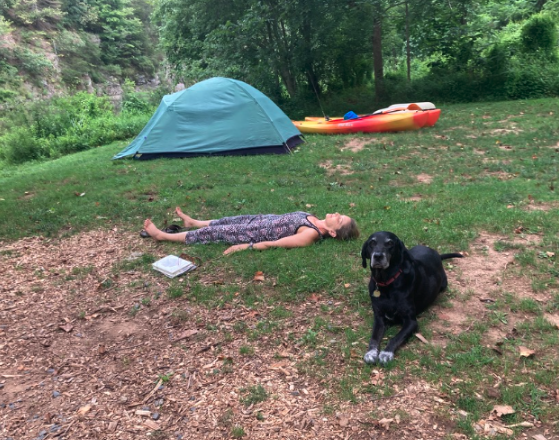This week Bea will facilitate.
She says:
How adept are we in nurturing compassion within ourselves and with others? This past week before going to sleep I listened to different talks by Thich Nhat Hanh (Thay) on You Tube. I wanted to ease myself to sleep wt the soothing voice of Thay and positive thoughts about mindfulness.
In several videos Thay talked about being compassionate with our own suffering in order to be able to ease the suffering of others. As I read the interview below and listened to the videos, I asked myself how I practice compassion toward myself, if at all.
One way to practice compassion with myself is to be kind with myself, which also means to indulge in the beauty of nature and appreciate its many bounties. This is the image of these wonderful flowers that I took at a farmer's market in Ithaca, NY... How do you practice compassion toward yourself? Does this practice help us to be more compassionate with the people we regularly interact with?
The below interview appeared in a Lion's Roar issue that dates back to July 1,2003. It is between Thich Nhat Han and John Malkin, a host with Free Radio Santa Cruz, CA:
In Engaged Buddhism, Peace Begins with You
John Malkin: Will you describe the origins of Engaged Buddhism and how you became involved in compassion-based social change?
Thich Nhat Hanh: Engaged Buddhism is just Buddhism. When bombs begin to fall on people, you cannot stay in the meditation hall all of the time. Meditation is about the awareness of what is going on-not only in your body and in your feelings, but all around you.
When I was a novice in Vietnam, we young monks witnessed the suffering caused by the war. So we were very eager to practice Buddhism in such a way that we could bring it into society. That was not easy because the tradition does not directly offer Engaged Buddhism. So we had to do it by ourselves. That was the birth of Engaged Buddhism.
Engaged Buddhism is just Buddhism. When bombs begin to fall on people, you cannot stay in the meditation hall all of the time.
Buddhism has to do with your daily life, with your suffering and with the suffering of the people around you. You have to learn how to help a wounded child while still practicing mindful breathing. You should not allow yourself to get lost in action. Action should be meditation at the same time.
John Malkin: Why did you come to the United States for the first time in 1966, and what happened while you were here?
Thich Nhat Hanh: I was invited by Cornell University to deliver a series of talks. I took the opportunity to speak about the suffering that was going on in Vietnam. After that I learned that the Vietnamese government didn't want me to come home. So I had to stay on and continue the work over here. It was not my intention to come to the West and share Buddhism at all. But because I was forced into exile, I did. An opportunity for sharing just presented itself.
John Malkin: What did you learn from being in the United States during that time?
Thich Nhat Hanh: The first thing I learned was that even if you have a lot of money and power and fame, you can still suffer very deeply. If you don't have enough peace and compassion within you, there is no way you can be happy. Many people in Asia would like to consume as much as Europeans and Americans. So when I teach in China and Thailand and in other Asian countries, I always tell them that people suffer very deeply in the West, believing that consuming a lot will bring them happiness. You have to go back to the traditional values and deepen your practice.
John Malkin: What did you learn from Martin Luther King, Jr. and the civil rights movement in the United States?
Thich Nhat Hanh: The last time Martin Luther King and I met was in Geneva during the peace conference called Paix sur Terre-"Peace on Earth." I was able to tell him that the people in Vietnam were very grateful for him because he had come out against the violence in Vietnam. They considered him to be a great bodhisattva, working for his own people and supporting us. Unfortunately, three months later he was assassinated.
John Malkin: What is your view of the current peace movement in the United States?
Thich Nhat Hanh: People were very compassionate and willing to support us in ending the war in Vietnam during the sixties. But the peace movement in America did not have enough patience. People became angry very quickly because what they were doing wasn't bringing about what they wanted. So there was a lot of anger and violence in the peace movement.
Nonviolence and compassion are the foundations of a peace movement. If you don't have enough peace and understanding and loving-kindness within yourself, your actions will not truly be for peace. Everyone knows that peace has to begin with oneself, but not many people know how to do it.
John Malkin: People often feel that they need to choose between being engaged in social change or working on personal and spiritual growth. What would you say to those people?
Thich Nhat Hanh: I think that view is rather dualistic. The practice should address suffering: the suffering within yourself and the suffering around you. They are linked to each other. When you go to the mountain and practice alone, you don't have the chance to recognize the anger, jealousy and despair that's in you. That's why it's good that you encounter people-so you know these emotions. So that you can recognize them and try to look into their nature. If you don't know the roots of these afflictions, you cannot see the path leading to their cessation. That's why suffering is very important for our practice.
If you don't have enough peace and understanding and loving-kindness within yourself, your actions will not truly be for peace.
John Malkin: When the World Trade Center was destroyed, you were asked what you would say to those responsible. You answered that you would listen compassionately and deeply to understand their suffering. Tell me about the practice of deep listening and how you think it helps in personal situations, as well as in situations like the World Trade Center attacks.
Thich Nhat Hanh: The practice of deep listening should be directed towards oneself first. If you don't know how to listen to your own suffering, it will be difficult to listen to the suffering of another person or another group of people.
I have recommended that America listen to herself first, because there is a lot of suffering within her borders. There are so many people who believe they are victims of discrimination and injustice, and they have never been heard and understood.
My proposal is very concrete: we have to set up a group of people-a kind of parliament-to practice listening to the suffering of America. It's my conviction that there are people in America who are capable of listening deeply, with compassion in their hearts. We have to identify them, and ask them to come and help us. Then we will ask the people who suffer to come forward and tell us what they have in their hearts. They'll have to tell us everything, and that won't be easy for those listening.
If America can practice this within her own borders, she will learn a lot. The insight will be enormous, and based on that insight, we can start actions that can repair the damage done in the past.
If America succeeded in that, she could bring that practice to the international level. The fact is that people know America has the capacity to hit. To hit very hard and make people suffer. But if America does not hit, that brings her more respect and gives her more authority.
John Malkin: After the World Trade Center was attacked, even people who believe in nonviolence said, "This occasion requires some action and some violence."
Thich Nhat Hanh: Violent action creates more violence. That's why compassion is the only way to reduce violence. And compassion is not something soft. It takes a lot of courage.
When you express your anger, either verbally or with physical violence, you are feeding the seed of anger, and it becomes stronger in you. It's a dangerous practice.
John Malkin: In Western psychology, we are taught that if we're angry, we can release that anger by, say, yelling or hitting a pillow. In your book, Anger: Wisdom for Cooling the Flames, you offer a criticism of this method. Why do you feel that this doesn't help get rid of anger?
Thich Nhat Hanh: In Buddhist psychology, we speak of consciousness in terms of seeds. We have a seed of anger in us. We have a seed of compassion in us. The practice is to help the seed of compassion to grow and the seed of anger to shrink. When you express your anger you think that you are getting anger out of your system, but that's not true. When you express your anger, either verbally or with physical violence, you are feeding the seed of anger, and it becomes stronger in you. It's a dangerous practice.
That's why recognizing the seed of anger and trying to neutralize it with understanding and compassion is the only way to reduce the anger in us. If you don't understand the cause of your anger, you can never transform it.
John Malkin: Many people have the view that happiness and enlightenment are things that happen only in the future, and that maybe only a few people are capable of experiencing them. Enlightenment can seem like a very unattainable thing.
Thich Nhat Hanh: Happiness and enlightenment are living things and they can grow. It is possible to feed them every day. If you don't feed your enlightenment, your enlightenment will die. If you don't feed your happiness, your happiness will die. If you don't feed your love, your love will die. If you continue to feed your anger, your hatred, your fear, they will grow. The Buddha said that nothing can survive without food. That applies to enlightenment, to happiness, to sorrow, to suffering.
First of all, enlightenment is enlightenment about something. Suppose you are drinking some tea and you are aware that you are drinking some tea. That kind of mindfulness of drinking is a form of enlightenment. There have been many times that you've been drinking but you didn't know it, because you are absorbed in worries. So mindfulness of drinking is already one kind of enlightenment.
If you can focus your mind on the act of drinking, then happiness can come while you have some tea. You are capable of enjoying that tea in the here and now. But if you don't know how to drink your tea in mindfulness and concentration, you are not really drinking tea. You are drinking your sorrow, your fear, your anger-and happiness is not possible.
To be aware that you are still alive, that you are walking on this beautiful planet-that is a form of enlightenment.
Insight is also enlightenment. To be aware that you are still alive, that you are walking on this beautiful planet-that is a form of enlightenment. That does not come just by itself. You have to be mindful in order to enjoy every step. And again, you have to preserve that enlightenment in order for happiness to continue. If you walk like someone who is running, happiness will stop.
Small enlightenments have to succeed each other. And they have to be fed all the time, in order for a great enlightenment to be possible. So a moment of living in mindfulness is already a moment of enlightenment. If you train yourself to live in such a way, happiness and enlightenment will continue to grow.
If you know how to maintain enlightenment and happiness, then your sorrow, your fear, your suffering don't have a lot of chance to manifest. If they don't manifest for a long time, then they become weaker and weaker. Then, when someone touches the seed of sorrow or fear or anger in you and those things manifest, you will know to bring back your mindful breathing and your mindful smiling. And then you can embrace your suffering.
John Malkin: In meditation practice, it is very common for us to feel that our minds are very busy and that we're not meditating very well. What do you have to say about this?
Thich Nhat Hanh: Meditation is a matter of enjoyment. When you are offered a cup of tea, you have an opportunity to be happy. Drink your tea in such a way that you are truly present. Otherwise, how can you enjoy your tea? Or you are offered an orange-there must be a way to eat your orange that can bring you freedom and happiness. You can train yourself to eat an orange properly, so that happiness and freedom are possible. If you come to a mindfulness retreat, you will be offered that kind of practice so that you can be free and happy while eating your orange or drinking your tea or out walking.
It is possible for you to enjoy every step that you make. These steps will be healing and refreshing, bringing you more freedom. If you have a friend who is well-trained in the practice of walking, you will be supported by his or her practice. The practice can be done every moment. And not for the future, but for the present moment. If the present moment is good, then the future will be good because it's made only of the present. Suppose you are capable of making every step free and joyful. Then wherever you walk, it is the pure land of the Buddha. The pure land of the Buddha is not a matter of the future.
John Malkin: You have wondered whether the next Buddha will come in the form of a single person or in the form of a community. . .
Thich Nhat Hanh: I think that the Buddha is already here. If you are mindful enough you can see the Buddha in anything, especially in the sangha. The twentieth century was the century of individualism, but we don't want that anymore. Now we try to live as a community. We want to flow like a river, not a drop of water. The river will surely arrive at the ocean, but a drop of water may evaporate halfway. That's why it is possible for us to recognize that the presence of the Buddha is the here and now. I think that every step, every breath, every word that is spoken or done in mindfulness-that is the manifestation of the Buddha. Don't look for the Buddha elsewhere. It is in the art of living mindfully every moment of your life.

























